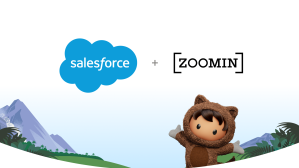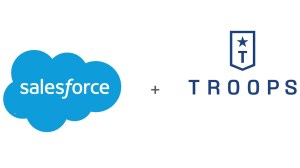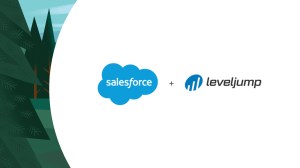Together, Salesforce and Slack are creating the digital HQ for success from anywhere
SAN FRANCISCO, July 21, 2021—Salesforce (NYSE: CRM), the global leader in CRM, today announced it has completed its acquisition of Slack Technologies, Inc.
“We couldn’t be more excited to have Slack as part of the Salesforce family, combining the #1 CRM and the trailblazing digital platform for the work anywhere world,” said Marc Benioff, Chair and CEO of Salesforce. “Together we’ll define the future of enterprise software, creating the digital HQ that enables every organization to deliver customer and employee success from anywhere.”
“We’ve learned over the past year that the workplace isn’t snapping back to the way it was,” said Bret Taylor, President and Chief Operating Officer of Salesforce. “Together, Slack and Salesforce Customer 360 will give every company in the world a single source of truth for their business and a single platform for connecting employees, customers, and partners with each other and the apps they use every day.”
“We have a once-in-a-generation opportunity to rethink and reshape how and where we work,” said Stewart Butterfield, Slack CEO and Co-Founder. “Salesforce and Slack are uniquely positioned to lead this historic shift to a digital-first world. I could not be more excited for what’s to come.”
“Salesforce and Slack coming together will help us become more connected, more productive, and more innovative so we can better serve our clients.”
Arvind Krishna, Chairman and CEO of IBM
“We are obsessed with continually delighting our clients, and offering them the best experience and value across every interaction,” said Arvind Krishna, Chairman and CEO of IBM. “Salesforce and Slack coming together will help us become more connected, more productive, and more innovative so we can better serve our clients.”
Acquisition to create the digital HQ for success from anywhere
Companies around the world have learned one thing over the past year—if you don’t have a digital way to connect with your employees, customers, and partners, you don’t have much of a chance of surviving.
Headquarters are no longer on Madison Avenue or Main Street—they are in the cloud. Every business—in every industry—has to optimize for a digital-first customer, employee, and partner experience.
This is a once-in-a-generation opportunity to rethink and reshape everything about how and where we work. That’s exactly what the combination of Salesforce and Slack is all about—creating the business operating system for the new world of work.
With the world’s #1 CRM, companies can sell, service, market, conduct commerce, and more from anywhere. Slack has transformed the way we work with its trailblazing digital platform for business communication, which is used by millions of people around the world and enables entire organizations to work far more efficiently and effortlessly.
Together, Salesforce and Slack will deliver the Slack-first Customer 360 that gives companies a single source of truth for their business, and a single platform for connecting employees, customers, and partners with each other and the apps they use every day, all within their existing workflows.
The combination of Salesforce and Slack also brings together two of the software industry’s most dynamic communities, creating an open and extensive ecosystem that will deliver the next generation of digital-first apps and workflows for business.
“Salesforce will create a modern workspace that enables collaboration, communities, communications, CRM functionality, customer experience, and AI in an ecosystem that will welcome other integrations to extend enterprise functionality,” said Wayne Kurtzman, IDC Research Director for Social, Communities, and Collaboration.
Salesforce and Slack are already making a huge difference. IBM’s 380,000 employees are working together in Slack, with numerous workflows across Salesforce Sales Cloud and Service Cloud powering customer success across locations and time zones.
As part of Salesforce, Slack will be positioned to accelerate and extend its mission to make work life simpler, more pleasant, and more productive. Slack will continue to operate under the Slack brand, driving forward a continued focus on its mission, customers, and community. Slack will continue to be led by CEO and Co-Founder Stewart Butterfield.
On Tuesday, August 17, 10:00 a.m. PT/1:00 p.m. ET/6:00 p.m. BST, Salesforce President and COO Bret Taylor and Slack CEO and Co-Founder Stewart Butterfield will host an event to share more about how the two companies are creating a powerful platform for the digital-first, work anywhere world. You can tune into the event here.
About Salesforce
Salesforce, the global CRM leader, empowers companies of every size and industry to digitally transform and create a 360° view of their customers. For more information about Salesforce (NYSE: CRM), visit: www.salesforce.com.
This communication contains forward-looking information related to Salesforce, Slack and the acquisition of Slack by Salesforce that involves substantial risks and uncertainties that could cause actual results to differ materially from those expressed or implied by such statements. Forward-looking statements relate to, among other things, future events and anticipated results of operations, business strategies, the anticipated benefits of the transaction, the anticipated impact of the transaction on the combined company’s business and financial and operating results, the expected amount and timing of synergies from the transaction, and other aspects of Salesforce’s operations or operating results. Risks and uncertainties include, but are not limited to: the impact of public health crises, such as pandemics (including coronavirus (COVID-19)) and epidemics and any related company or government policies and actions to protect the health and safety of individuals or government policies or actions to maintain the functioning of national or global economies and markets; the effect of the transaction on the ability of Salesforce or Slack to retain and hire key personnel and maintain relationships with customers, suppliers and others with whom Salesforce or Slack do business, or on Salesforce’s or Slack’s operating results and business generally; Salesforce’s ability to successfully integrate Slack’s operations and realize expected synergies; the impact of, and actions Salesforce may take in response to, the COVID-19 pandemic, related public health measures and resulting economic downturn and market volatility; Salesforce’s ability to maintain security levels and service performance meeting the expectations of its customers, and the resources and costs required to avoid unanticipated downtime and prevent, detect and remediate performance degradation and security breaches; the expenses associated with Salesforce’s data centers and third-party infrastructure providers; Salesforce’s ability to secure additional data center capacity; Salesforce’s reliance on third-party hardware, software and platform providers; the effect of evolving domestic and foreign government regulations, including those related to the provision of services on the Internet, those related to accessing the Internet, and those addressing data privacy, cross-border data transfers and import and export controls; current and potential litigation involving Salesforce or its industry, including litigation involving acquired entities, and the resolution or settlement thereof; regulatory developments and regulatory investigations involving Salesforce or affecting its industry; Salesforce’s ability to successfully introduce new services and product features, including any efforts to expand its services; the success of Salesforce’s strategy of acquiring or making investments in complementary businesses, joint ventures, services, technologies and intellectual property rights; Salesforce’s ability to complete, on a timely basis or at all, announced transactions; Salesforce’s ability to realize the benefits from acquisitions, strategic partnerships, joint ventures and investments; Salesforce’s ability to successfully integrate acquired businesses and technologies; Salesforce’s ability to compete in the market in which it participates; the success of Salesforce’s business strategy and its plan to build its business, including its strategy to be a leading provider of enterprise cloud computing applications and platforms; Salesforce’s ability to execute its business plans; Salesforce’s ability to continue to grow unearned revenue and remaining performance obligation; the pace of change and innovation in enterprise cloud computing services; the seasonal nature of Salesforce’s sales cycles; Salesforce’s ability to limit customer attrition and costs related to those efforts; the success of Salesforce’s international expansion strategy; the demands on Salesforce’s personnel and infrastructure resulting from significant growth in its customer base and operations, including as a result of acquisitions; Salesforce’s ability to preserve its workplace culture, including as a result of its decisions regarding its current and future office environments or work-from-home policies; Salesforce’s dependency on the development and maintenance of the infrastructure of the Internet; Salesforce’s real estate and office facilities strategy and related costs and uncertainties; fluctuations in, and its ability to predict, its operating results and cash flows; the variability in Salesforce’s results arising from the accounting for term license revenue products; the performance and fair value of Salesforce’s investments in complementary businesses through its strategic investment portfolio; the impact of future gains or losses from Salesforce’s strategic investment portfolio, including gains or losses from overall market conditions that may affect the publicly traded companies within its strategic investment portfolio; Salesforce’s ability to protect its intellectual property rights; Salesforce’s ability to develop its brands; the impact of foreign currency exchange rate and interest rate fluctuations on its results; the valuation of its deferred tax assets and the release of related valuation allowances; the potential availability of additional tax assets in the future; the impact of new accounting pronouncements and tax laws; uncertainties affecting Salesforce’s ability to estimate its tax rate; uncertainties regarding Salesforce’s tax obligations in connection with potential jurisdictional transfers of intellectual property, including the tax rate, the timing of the transfer and the value of such transferred intellectual property; uncertainties regarding the effect of general economic and market conditions; the impact of geopolitical events; uncertainties regarding the impact of expensing stock options and other equity awards; the sufficiency of Salesforce’s capital resources; Salesforce’s ability to comply with its debt covenants and lease obligations; and the impact of climate change, natural disasters and actual or threatened public health emergencies, including the ongoing COVID-19 pandemic.
Further information on these and other risks and uncertainties relating to Salesforce can be found in its reports filed on Forms 10-K, 10-Q and 8-K and in other filings Salesforce makes with the Securities and Exchange Commission from time to time and available at www.sec.gov. These documents are also available under the Financials heading of the Investor Relations section of Salesforce’s website at www.salesforce.com/investor. The forward-looking statements included in this communication are made only as of the date hereof. Salesforce undertakes no obligation to update any forward-looking statements to reflect subsequent events or circumstances, except as required by law.
Any unreleased services or features referenced in this or other press releases or public statements are not currently available and may not be delivered on time or at all. Customers who purchase Salesforce applications should make their purchase decisions based upon features that are currently available. Salesforce has headquarters in San Francisco, with offices in Europe and Asia, and trades on the New York Stock Exchange under the ticker symbol "CRM." For more information please visit https://www.salesforce.com, or call 1-800-NO-SOFTWARE.











